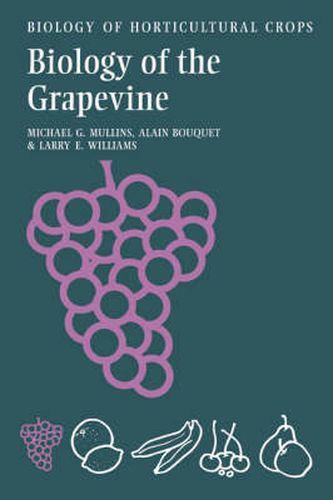Readings Newsletter
Become a Readings Member to make your shopping experience even easier.
Sign in or sign up for free!
You’re not far away from qualifying for FREE standard shipping within Australia
You’ve qualified for FREE standard shipping within Australia
The cart is loading…






Information on the evolution, taxonomy, morphology, anatomy, physiology and genetics of grapevines is scarce and thinly spread in the literature on horticulture and the plant sciences. This book aims to provide for the first time in English a concise but comprehensive overview of the biology and cultivation of the grapevine, accessible to all concerned with viticulture. After a description of the essential features of viticulture, including a concise history from antiquity to modern times, the authors consider the taxonomy of the grapevine and the evolutionary processes which gave rise to the diversity within the Vitaceae. Particular attention is paid to the genera Vitis and Muscadinia, which are considered a reserve of genetic variation for the improvement of grapevines. A description of the vegetative and reproductive anatomy of the grapevine precedes a full discussion of the developmental and environmental physiology of these fascinating and economically important plants. The concluding chapter considers the potential for genetic improvement of grapevines and includes coverage of the problems encountered, and the methods and strategies employed, in breeding for scions and rootstocks. Special reference to the role of plant biotechnology and tissue culture in the genetic improvement of grapevines is also made.
$9.00 standard shipping within Australia
FREE standard shipping within Australia for orders over $100.00
Express & International shipping calculated at checkout
Information on the evolution, taxonomy, morphology, anatomy, physiology and genetics of grapevines is scarce and thinly spread in the literature on horticulture and the plant sciences. This book aims to provide for the first time in English a concise but comprehensive overview of the biology and cultivation of the grapevine, accessible to all concerned with viticulture. After a description of the essential features of viticulture, including a concise history from antiquity to modern times, the authors consider the taxonomy of the grapevine and the evolutionary processes which gave rise to the diversity within the Vitaceae. Particular attention is paid to the genera Vitis and Muscadinia, which are considered a reserve of genetic variation for the improvement of grapevines. A description of the vegetative and reproductive anatomy of the grapevine precedes a full discussion of the developmental and environmental physiology of these fascinating and economically important plants. The concluding chapter considers the potential for genetic improvement of grapevines and includes coverage of the problems encountered, and the methods and strategies employed, in breeding for scions and rootstocks. Special reference to the role of plant biotechnology and tissue culture in the genetic improvement of grapevines is also made.